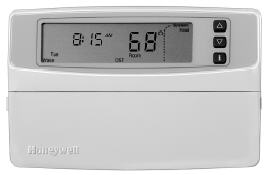Programmable Thermostats
Programmable Thermostats
Overview

Heat loss is directly proportional to the temperature difference between the inside and the outside; the higher the temperature difference, the higher the heat loss (heat gain).
The easiest and cheapest way to control heating energy cost is with temperature reduction. It does NOT cost more to reheat the house after a set-back than the amount of energy saved during the set-back. However, the amount of the savings will depend on how far the temperature is set-back, for how many hours and how often.
There is a point at which further energy savings may not be practical. For example, if conditions are such that the house looses 1F of temperature for each hour the thermostat is set-back and the starting temperature is 72F, in 8 hours the house temperature would be 64F. Therefore, it wouldn’t matter if the 8 hour set-back temperature was 60F or 55F, the savings would be the same. This is also why more savings result from the first few degrees of set-back.
The rule of thumb is:
1F on the thermostat will save
- 1% for 8 hours
- 3% for 24 hours
of setback, for the entire season.
The ‘catch’ is that the setting must be consistent for the ENTIRE season to see this amount of savings in the total energy bill. Some savings will still result for shorter periods of time.
Programmable thermostats are an inexpensive way to ‘remember’ to make the settings daily. Also, they allow a lower setting to be made because the space can be brought back up to a higher setting before people return home from work, or get out of bed.
New furnaces will likely come standard with a programmable thermostat.
If retrofitting a furnace, most any thermostat available today will work on conventional heating and cooling systems. Thermostat wires have a standard color code, which makes it a possible Do-It-Yourself job; just be sure to shut off the power to the furnace before disconnecting any wires. (Thermostat wiring is low voltage, so you won’t get shocked, but a power surge could damage the equipment.)
